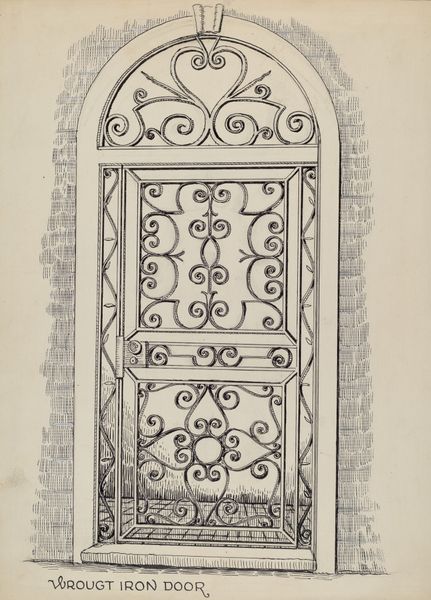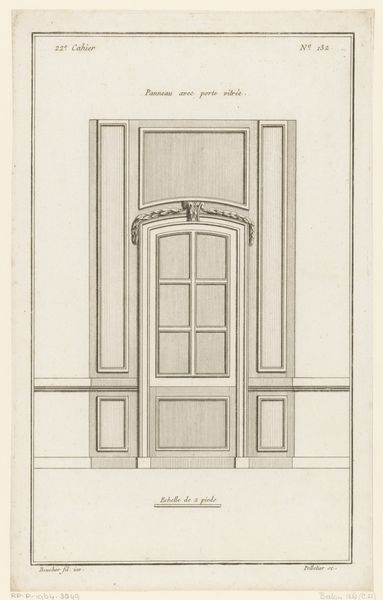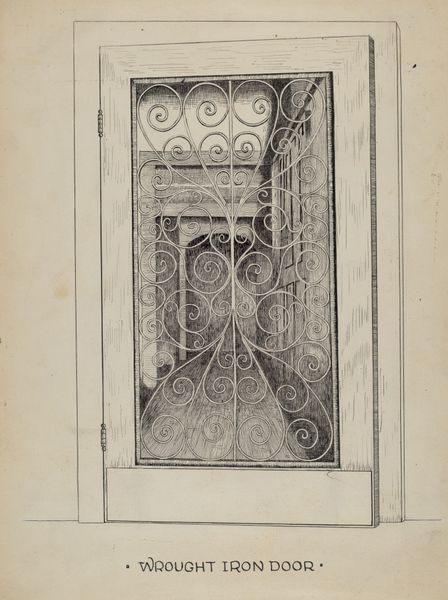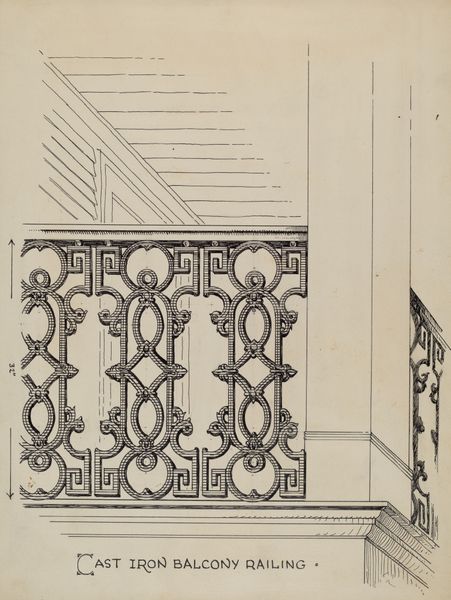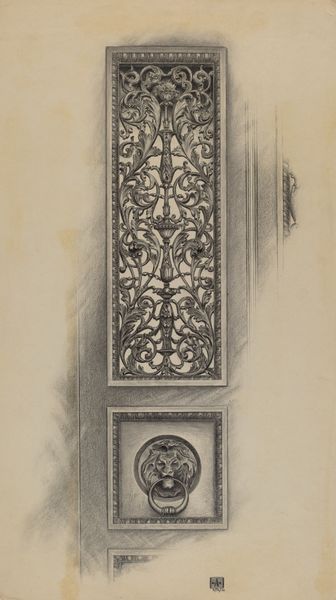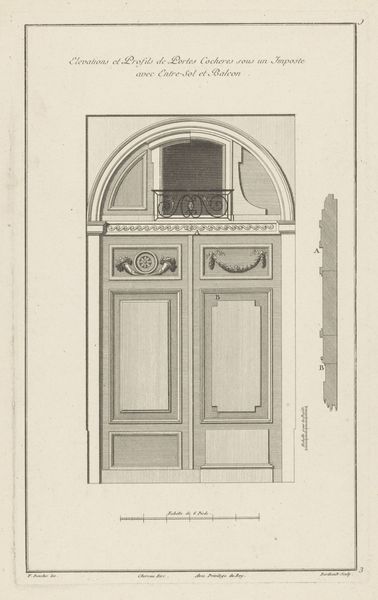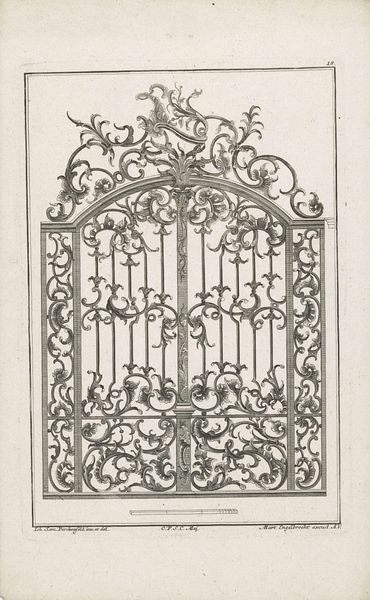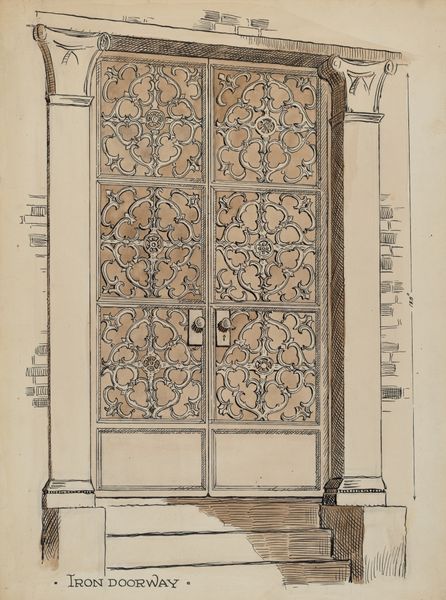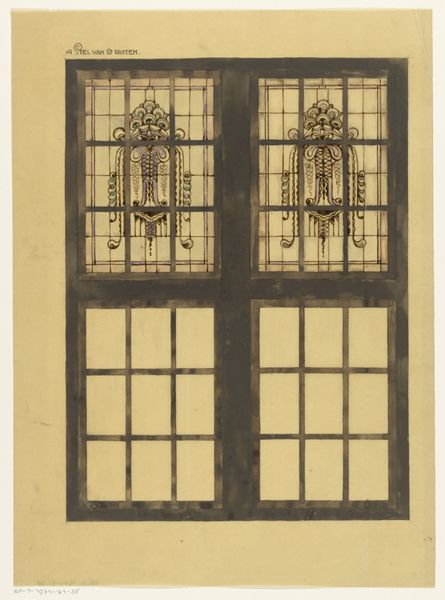
drawing, metal, architecture
#
drawing
#
metal
#
geometric
#
cityscape
#
architecture
Dimensions: overall: 30.5 x 22.7 cm (12 x 8 15/16 in.)
Copyright: National Gallery of Art: CC0 1.0
Curator: This is Thomas Byrne's "Cast Iron Window Grill," dating from around 1936. It’s rendered in drawing, depicting a metal window grill in an architectural setting. Editor: It's fascinating. I'm struck by how this drawing of architecture marries a sense of geometric constraint with organic, serpentine details. What can we read into that tension? Curator: Well, let's think about 1936. The world was grappling with economic depression and rising political tensions. How might that social climate inform our understanding of a design element like a window grill? The serpent motif is fascinating. Editor: You're right, I hadn't thought about that. Serpents often carry ambivalent meanings—renewal, temptation, danger… Curator: Exactly! Consider how those associations might relate to ideas of protection and confinement during a period of social upheaval. Is the grill there to protect from perceived outside threats? Or to imprison those on the inside, caught within a socio-economic system they can’t escape? Are these anxieties gendered or class-based? Editor: So, the grill isn't just a decorative element; it’s a symbol loaded with social meaning and anxieties specific to that historical moment. Curator: Precisely. Architecture is never neutral. Who feels the need for such barriers? What fears or aspirations do they embody? Thinking about those questions helps us connect design with social consciousness. What do you make of its replication? Editor: Looking at it now, I can't unsee it as more than a pretty design. Thanks for helping me understand how architecture and art can be viewed in terms of power and fear. Curator: And thank you, it's been really helpful articulating these ideas. Considering this artwork opens an interesting dialogue that reflects social struggles and resistance to imposed control.
Comments
No comments
Be the first to comment and join the conversation on the ultimate creative platform.

